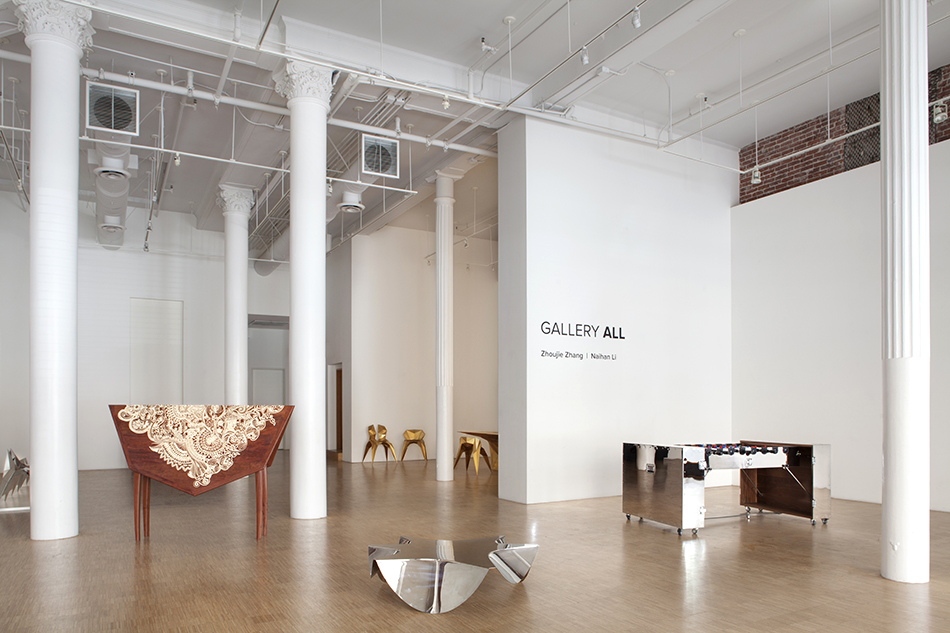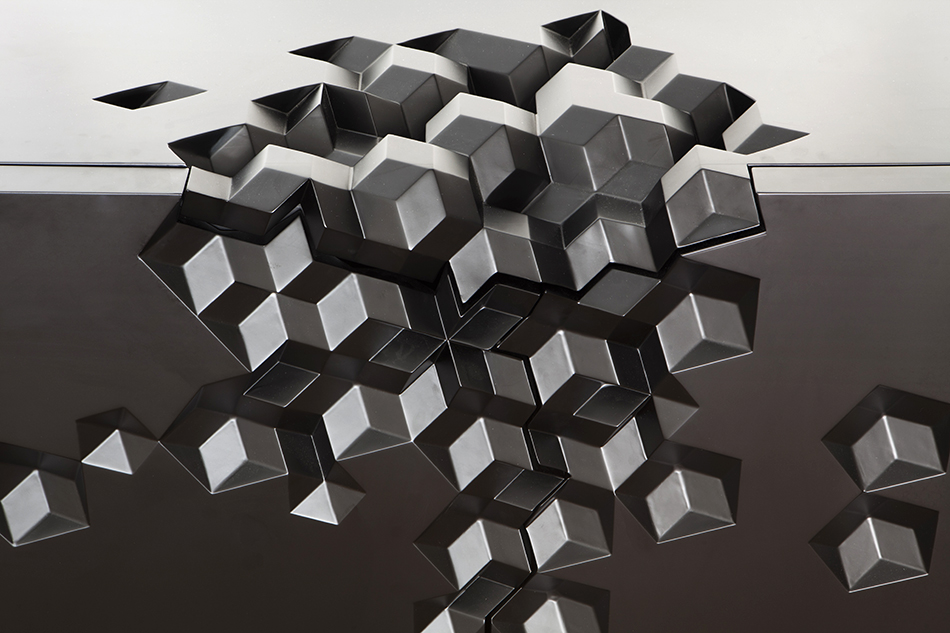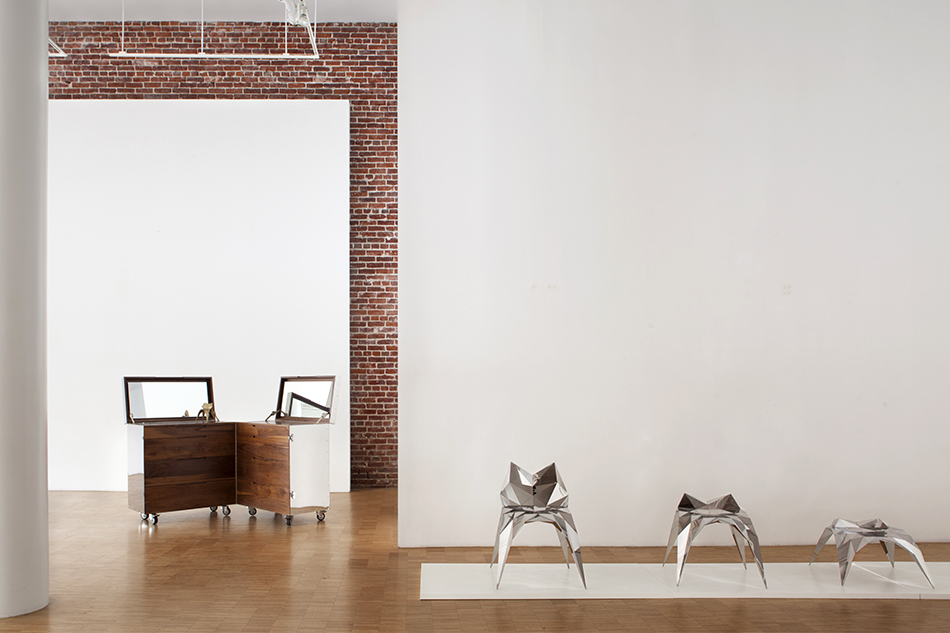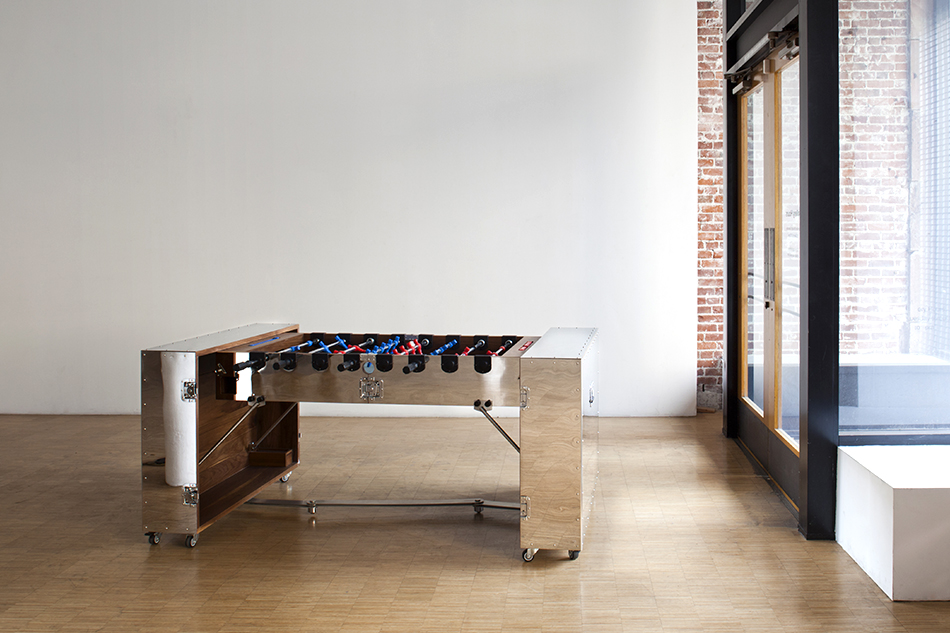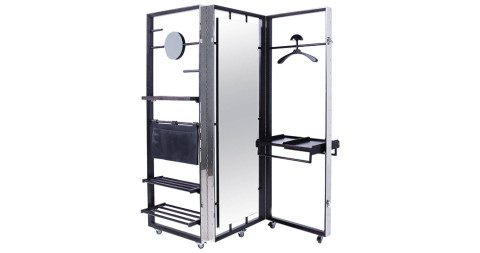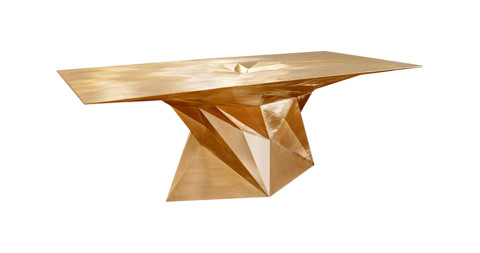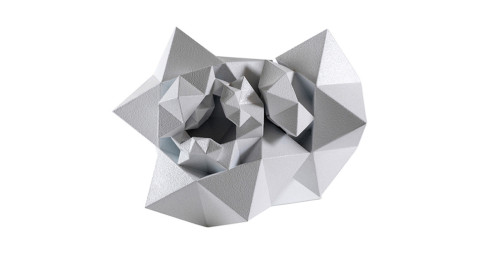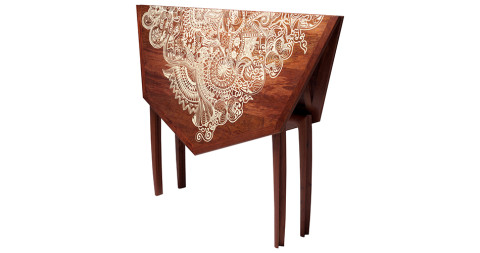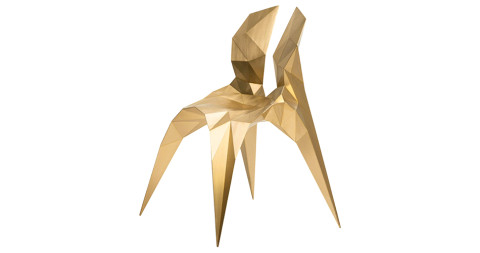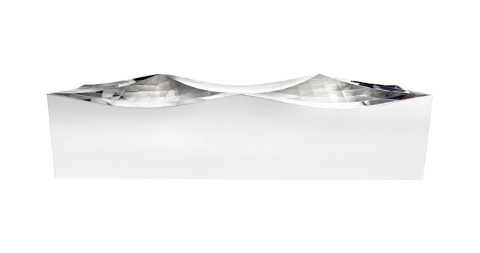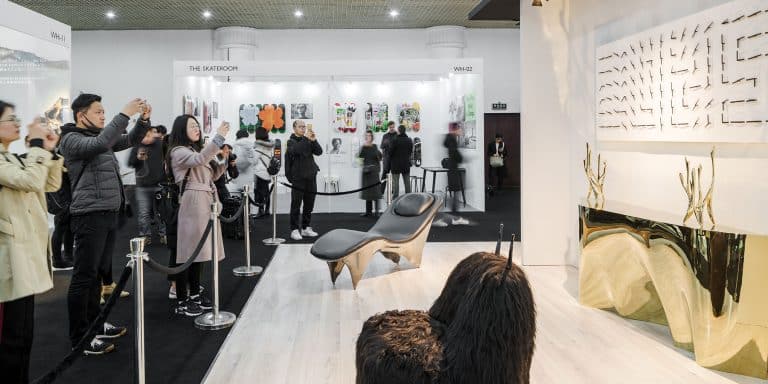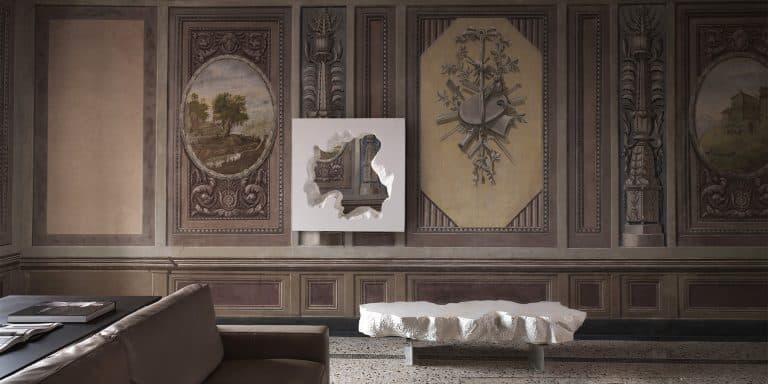
July 6, 2015Yu Wang (left) and Xiao Lu, two of Gallery ALL’s founders (the third is architect Qingyun Ma) pose in the gallery’s downtown Los Angeles location — another slightly newer, larger outpost exists in Beijing. Top: Two brass chairs by Chinese-born artist Zhoujie Zhang flank a lacquered wood console by architectural and design studio Aranda\Lasch.
Gallery ALL, located in rapidly reviving downtown Los Angeles, occupies a spare, minimalist space on the first floor of the iconic Bradbury Building, the 1893 Romanesque Revival landmark renowned for its impeccably restored Victorian interior, replete with Parisian tiles, lacy wrought-iron and massive skylights. (Movie buffs will recognize its interiors from Blade Runner and 500 Days of Summer.)
In contrast to this elegantly archaic backdrop, Gallery ALL presents cutting-edge contemporary Chinese design by artists and architects who seamlessly fuse furniture and art as well as Eastern and Western aesthetics. One example among the pieces currently on view: Naihan Li’s 2014 “Crates” series, composed of deceptively simple-looking walnut-and-steel cabinets that unfold like puzzle boxes to reveal modular storage for clothing or office equipment.
The three forces behind ALL are managing partner Xiao Lu; Yu Wang, an architect formerly with the New York- and Arizona-based architectural and design studio Aranda\Lasch, which has exhibited at venues ranging from MoMA to Design Miami; and Qingyun Ma, currently the dean of the USC School of Architecture and founder of MADA s.p.a.m, a Shanghai-based architecture firm that’s exhibited at the Venice Biennale and the Pompidou Centre, in Paris. The gallery’s mission is to introduce the U.S., China and, ultimately, the world to the best in contemporary Chinese design. To that end, they established Gallery ALL in L.A. last May, and three months later opened a second space in Beijing that’s twice the size. Like the L.A. gallery, the Chinese outpost is located in a burgeoning creative enclave, in this case Beijing’s 751 Design Park. Both locations host two to three exhibitions a year as well as various design-related events and presentations.
“I was surprised that there were so few galleries in China representing contemporary design,” says Lu of the Beijing space where currently pieces by Aranda\Lasch and Naihan Li are on display. “We immediately saw an opening: We could introduce Chinese collectors to the idea that furniture and functional objects are worthy of their attention, and through our L.A. space introduce America to the very best in contemporary Chinese design. America is the gateway to the entire world.”
In contrast to its elegantly archaic backdrop, Gallery ALL presents cutting-edge contemporary Chinese design by artists and architects.

Another Naihan Li piece, the Fold-Open Bookshelf, sports LED lighting inside to illuminate any titles stored therein.
Lu and her partners are proceeding judiciously, building their stable of artists slowly and thoughtfully. “We believe Naihan Li and Zhoujie Zhang are among the most promising artists working today,” says Lu of two of the artists Gallery ALL currently represents. “They both were educated in London, Zhang at Central Saint Martins and Li at the Bartlett school. We feel that the experience helped broaden their vision and approaches to design. The work is international, but at the same time, they maintain a modern Chinese sensibility.”
The objects shown by Gallery ALL astonish, delight and sometimes mystify in their simultaneous beauty and functionality. Consider Zhang’s Split chair (2011), which is low-backed and whose highly reflective stainless-steel surface is faceted like a gem, an effect the artist achieved using a digitized fabrication system of his own creation. Meanwhile, the Scallop table (2010) by Aranda\Lasch doubles as an amoeba-like abstract sculpture in stainless steel, coated in a white powder finish. Li’s Folding Table Mother Butterfly (2014) is made of Brazilian bubinga wood and inlaid with ivory-colored resin in an intricate paisley pattern that pays tribute to the ancient Chinese folk tale of the Mother Butterfly, who gave birth to 12 baby butterflies that transformed into the first members of the Miao people of Southern China. “The butterfly has many cultural implications in China: love, life, procreation,” explains Lu.
Lu and her partners have lined up an impressive schedule of exhibitions, including solo shows for Li and Zhang planned for later this year in L.A., and they will have booths at such major art fairs as Design Miami (they’ve just returned from Design Miami/Basel) — all in keeping with their mission to build a global presence and encourage both cross-cultural making and collecting. “We don’t want to sell exclusively to Chinese or Chinese-American collectors,” she says. “True collectors buy art; they don’t shop by nationality.”
Visit Gallery ALL on 1stdibs
TALKING POINTS
Xiao Lu shares her thoughts on a few choice pieces offered by Gallery ALL

